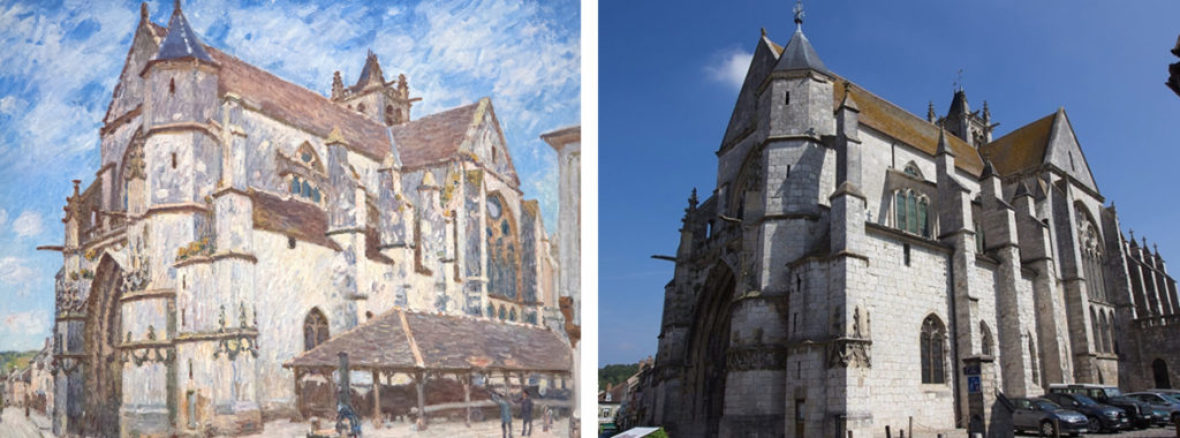تعد سلسلة كاتدرائية روان من مونيه من بين الإنجازات الأكثر شهرة في تاريخ الفن. بعد أكثر من ثلاث سنوات من إنشائه في أوائل فبراير 1892 ، تم عرض عشرين من لوحات كاتدرائية مونيه الثلاثين في معرض دوراند رويل ، واعتبر المعرض بأغلبية ساحقة انتصارا من قبل أولئك الذين حضروا في مايو من عام 1895. من بين الرسامين ، كتب كاميل بيسارو كيف أنه "تم حمله بعيدا عن براعتهم غير العادية. سيزان، الذي التقى به [بيسارو] أمس في دوراند رويل، متفق تماما ... هذا هو عمل فنان متوازن ولكنه متهور يسعى وراء الفروق الدقيقة غير الملموسة للتأثيرات التي يحققها أي رسام آخر. " (كاميل بيسارو لابنه لوسيان، 26 مايو 1895)
ومع ذلك ، لم يكن مونيه واثقا جدا عند متابعة المسعى في أبريل 1892. عاد مونيه ، المعروف بتقلبات المزاج المعتادة ، إلى جيفرني مع الدفعة الأولى من لوحات الكاتدرائية وكان قلقا من أن دفع الضوء وتأثيره على الشكل بما يتجاوز جميع الحسابات السابقة قد يكون تجاوزا مفرطا. ولكن عندما كشف النقاب عن اللوحات للزوار ، كان ردهم مذهلا ، ونمت ثقة مونيه. تطابق ثناء الرسام الأمريكي ثيودور روبنسون الصاخب مع رد الفعل المذهل الذي عاشه الآخرون عند رؤية هذه الروائع: "إنها ببساطة هائلة. أعتقد أنه لم يتم رسم الهندسة المعمارية على هذا النحو من قبل ، والانطباع الأكثر إثارة للدهشة عن الشيء ، والشعور بالعظمة والاضمحلال ... ليس خطا في أي مكان - ومع ذلك هناك شعور رائع بالبناء والصلابة. أليس من الغريب أن يأخذ رجل مثل هذه المواد ويستخدمها بشكل رائع؟" (روبنسون إلى ج. ألدن وير ، مايو 1892)
هل يمكن أن يكون ألفريد سيسلي من بين أوائل المستجيبين للكاتدرائية ؟ التاكيد. مونيه وكان هو أقرب الأصدقاء. في حين كان سيسلي رجلا خاصا وهادئا ترك القليل من فتات الخبز في السيرة الذاتية ، إلا أنه كان أيضا موردا موثوقا به للغاية وفنانا يحظى باحترام مونيه بقوة. في الواقع ، تؤكد الروايات المباشرة لمجموعات سيسلي ومونيه العلاقة بين السلسلتين. يشير مدخل 21 سبتمبر 1893 في مذكرات جولي مانيه (الابنة المراهقة آنذاك لبيرث موريسوت وشقيق إدوارد مانيه أوجين) إلى أنه "بعد صباح ممطر ، تحول اليوم إلى مشمس ، وخرجنا إلى موريت ... رأينا سيسلي". وأكد ابنها، مؤرخ الفن دينيس روارت هذا الإدخال، مشيرا كذلك إلى أن "بيرث وابنتها... ذهب مع مالارميز إلى موريت حيث كان سيسلي يرسم سلسلة من الكنائس - مستوحاة ، أو هكذا اعتقد مالارميه من سلسلة مونيه من الكاتدرائيات. " (دينيس روارت ، باريس ، 1950)
استقر ألفريد سيسلي في موريت سور لوينغ في نوفمبر 1889 ، وهي قرية ذات سحر لا مثيل له بين إيل دو فرانس وبورغندي على حافة غابة فونتينبلو. من بين ميزاتها الأكثر جاذبية كنيسة نورتي دام المهيبة ذات الطراز القوطي التي تهيمن على الأفق من النهر. من حديقة سيسلي المتواضعة ، كان برج الكنيسة سمة موجودة في كل مكان للأفق.
على عكس مونيه ، الذي تم تنفيذ مشاهده الثلاثين لرواق كاتدرائية روان على الجانب الغربي حصريا كفحص للعبة الضوء والظل عبر واجهة المبنى ، سعى سيسلي إلى تأكيد الطبيعة الدائمة للكنيسة في ظل التغيرات المتفاوتة للضوء والجو الذي تم التقاطه في لوحاته. من بين الانطباعيين ، كان أكثر تكريسا للعمل في الهواء الطلق دون التراجع إلى الاستوديو لإجراء تعديلات أو لمسات. عمل سيسلي الهادئ والخاص على كاتدرائياته كما كان دائما ، alla prima وحصريا في الهواء الطلق لإظهار المظهر المتغير للفكرة من خلال سلسلة من التغييرات الجوية. إن كونه أعطى عناوين الأعمال مثل "تحت أشعة الشمس" و "تحت الصقيع" و "تحت المطر" وعرضها كمجموعة في صالون دو شامب دو مارس في عام 1894 يشير إلى أنه فكر فيها أيضا كتفسيرات متسلسلة.
غالبا ما تم الاستشهاد بسيسلي لنزاهته اللطيفة وقدرته على تقديم صدق الجو والنغمة ، لكنه كان قادرا أيضا على إنتاج مؤلفات منظمة بقوة وبرع في تصوير المشاهد من زوايا غير عادية نشطت مؤلفاته. ليس من المستغرب أن يقدم L'Église de Moret, le Soir مثالا ممتازا على كيفية تعيين سيسلي لحامله إلى ميزة كبيرة. يميل خط نظره قليلا إلى الأعلى ، ولكنه موجه بالتأكيد إلى زاوية الرواق الجنوبي الغربي. تؤكد هذه الميزة العمودية المجمعة على التوجه التصاعدي المفرض لزخارف الكنيسة. لكن الفن الحقيقي هنا هو أنه يعمل كمركز تنسحب منه قوتان متوترتان بعيدا عن بعضهما البعض والمثير للدهشة ، بقوة متناسبة. إن تألق هذه اللوحة هو التأثير الدرامي لمنظور الغرق الذي أنشأه الشارع الضيق (rue de l'Église) على اليسار والمعارضة الصارخة يوفر بنية حجرية ذات وزن وكتلة لا يمكن تصورهما. كلاهما جوانب مستوية تظهر بشكل جميل وجهات نظر متناقصة من ثلاث نقاط تمت صياغتها بشكل مثالي.
من بين عشرات الزيوت المعروفة التي رسمها سيسلي للكنيسة في موريت ، L'Église de Moret ، فإن le Soir ليست فقط ذات حجم سخي ، بل هي أيضا من بين أكبر اللوحات في عمله بأكمله. يوضح حجم هذا العمل تصميم سيسلي على إنشاء تكريم يحترم تماما المهندسين المعماريين وبناة هيكل منيع وحازم للغاية ، لدرجة أنه وقف كما هو عندما رسمه سيسلي كما فعل خلال العصور الوسطى ، ويقف لنا اليوم ، لأنه سيستمر في سحيق.
الاستفسارتفاصيل الفن
ألفريد SISLEY & nbsp(1839-1899)
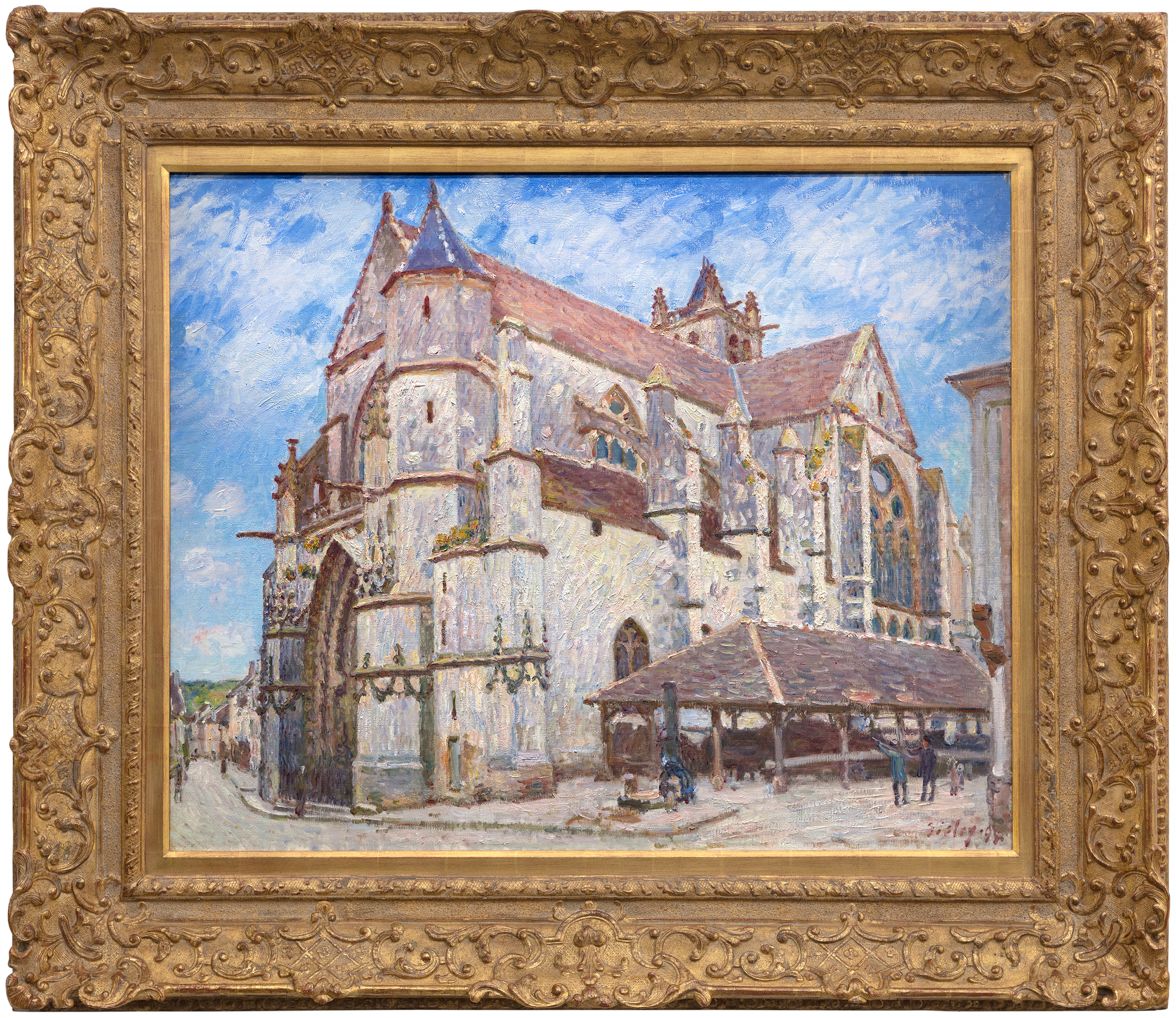
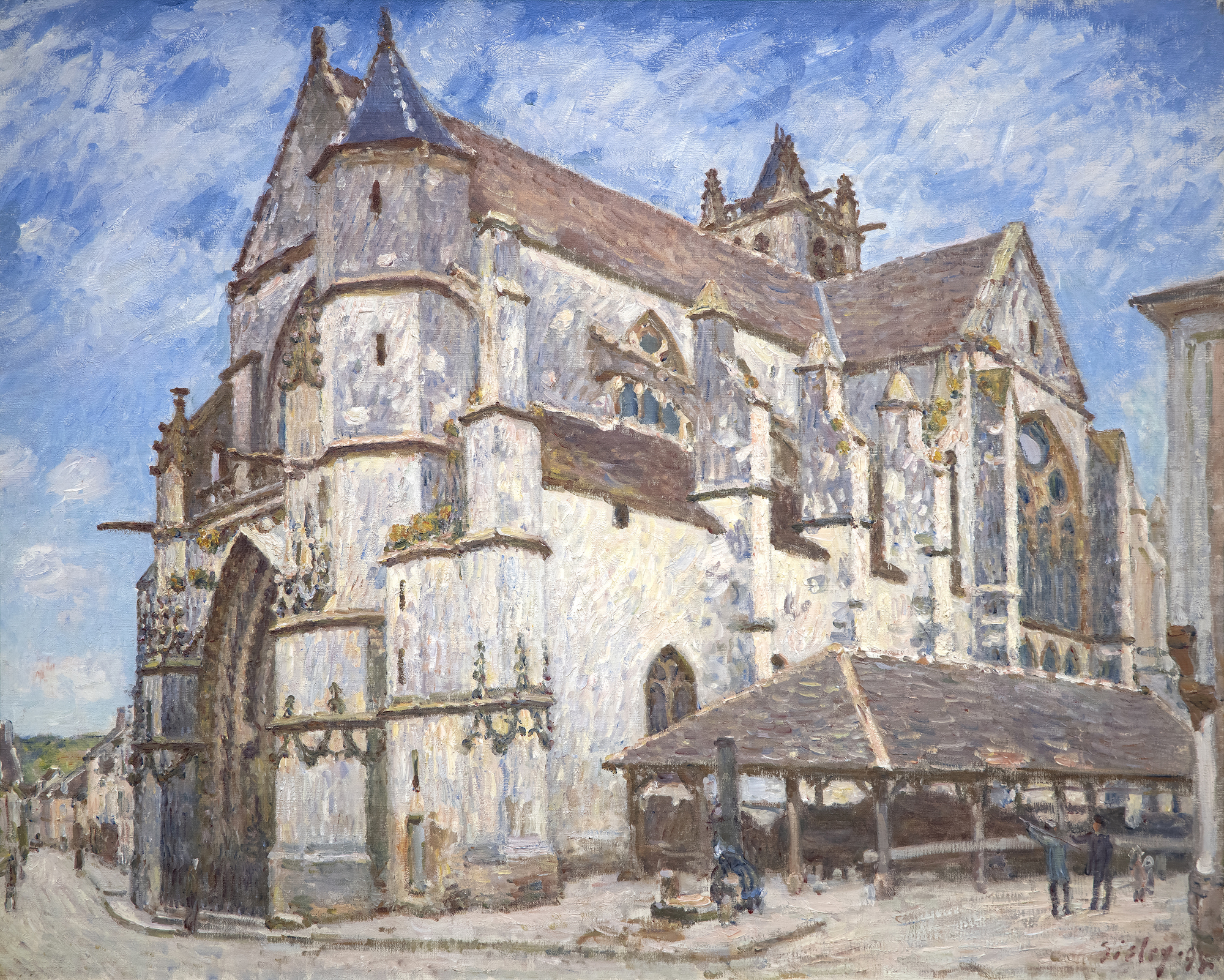
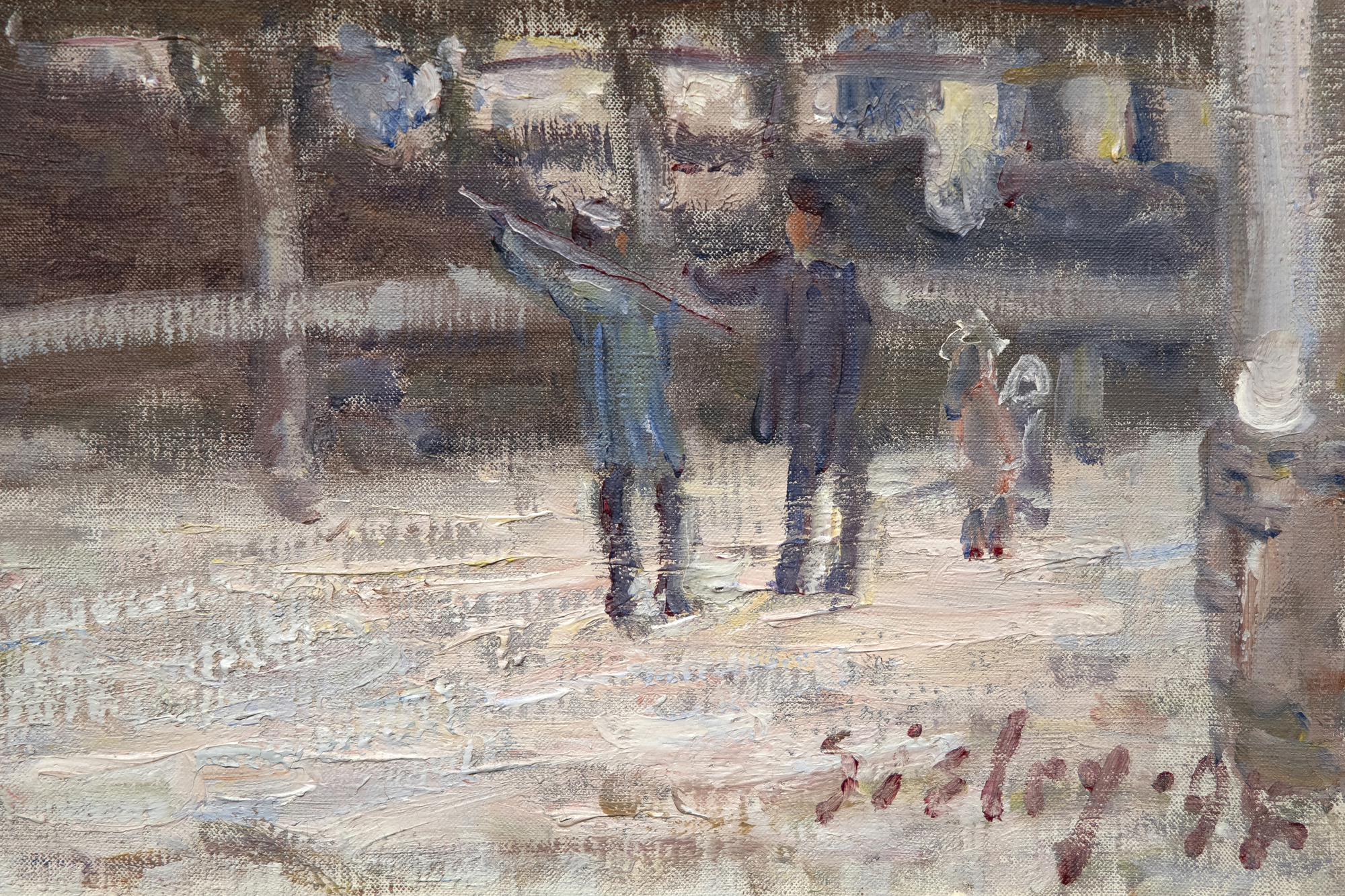
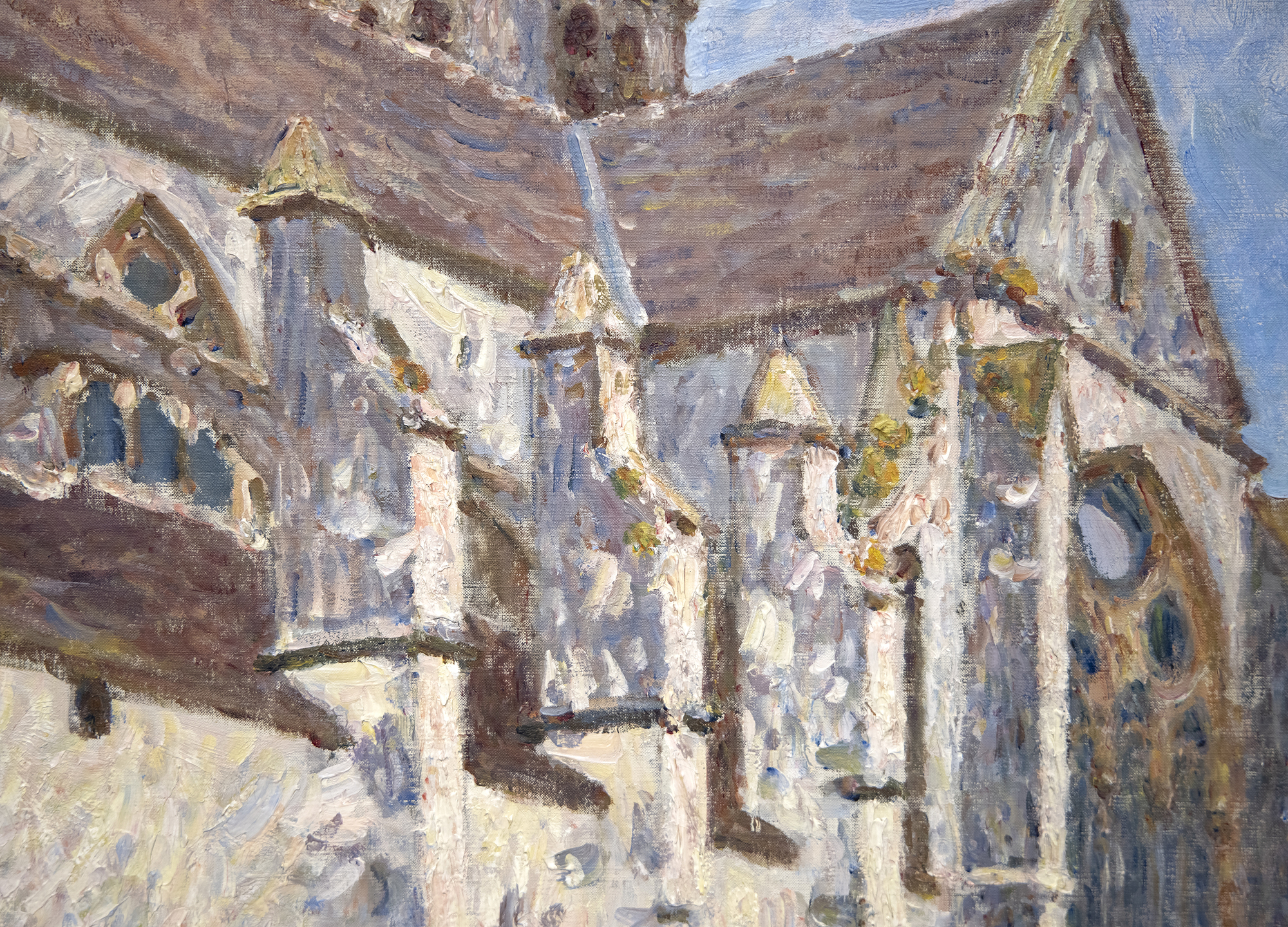
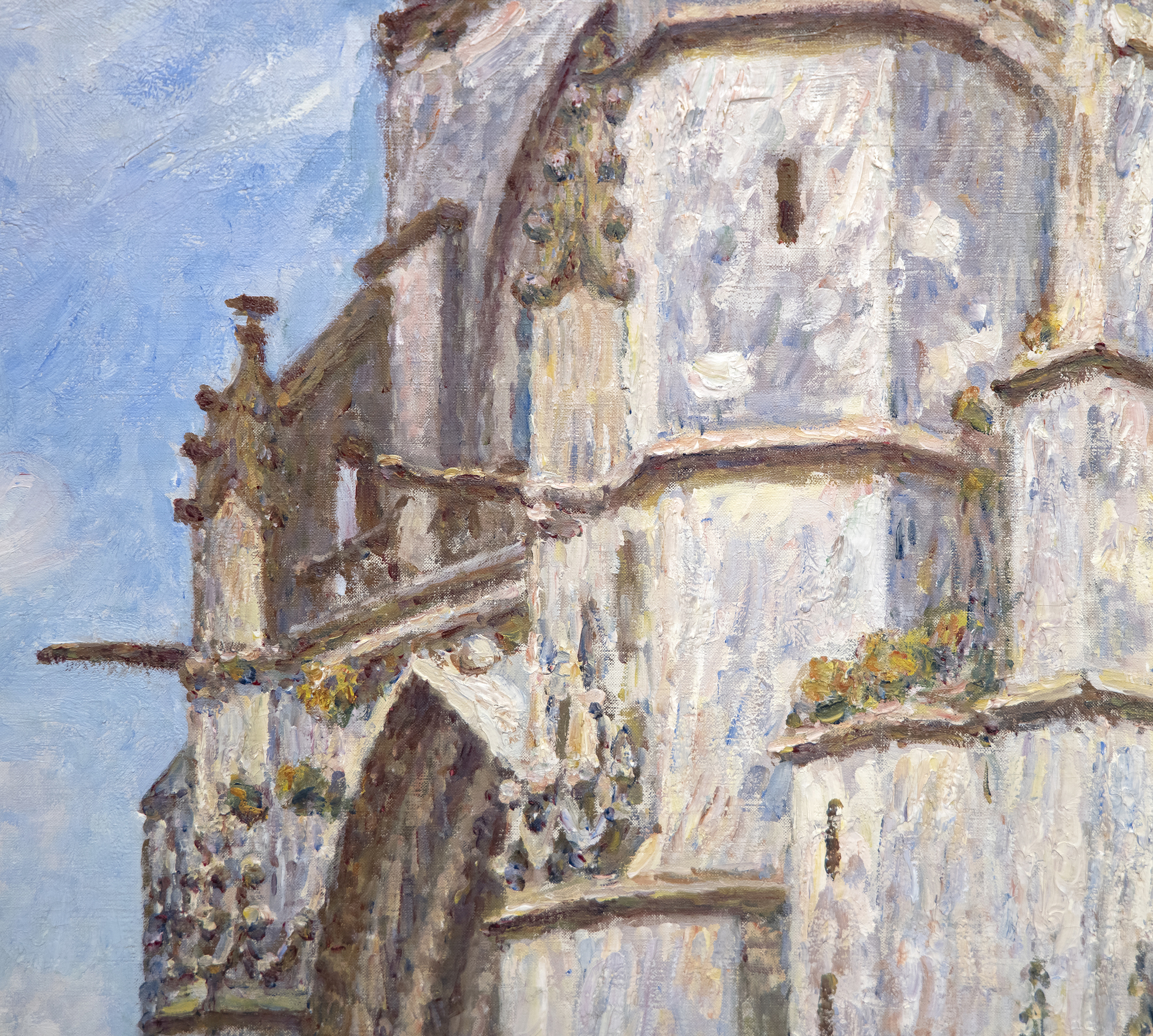
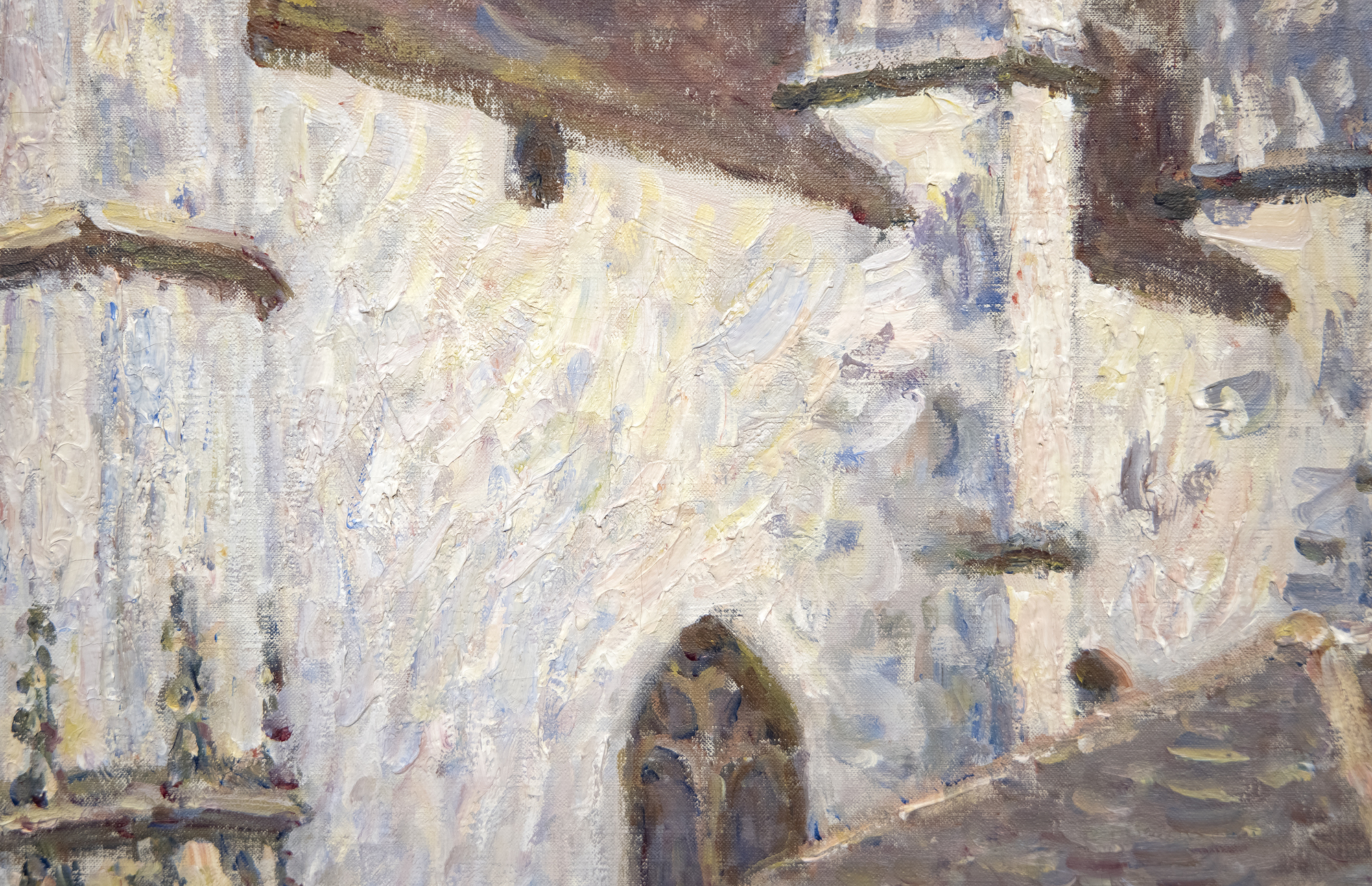
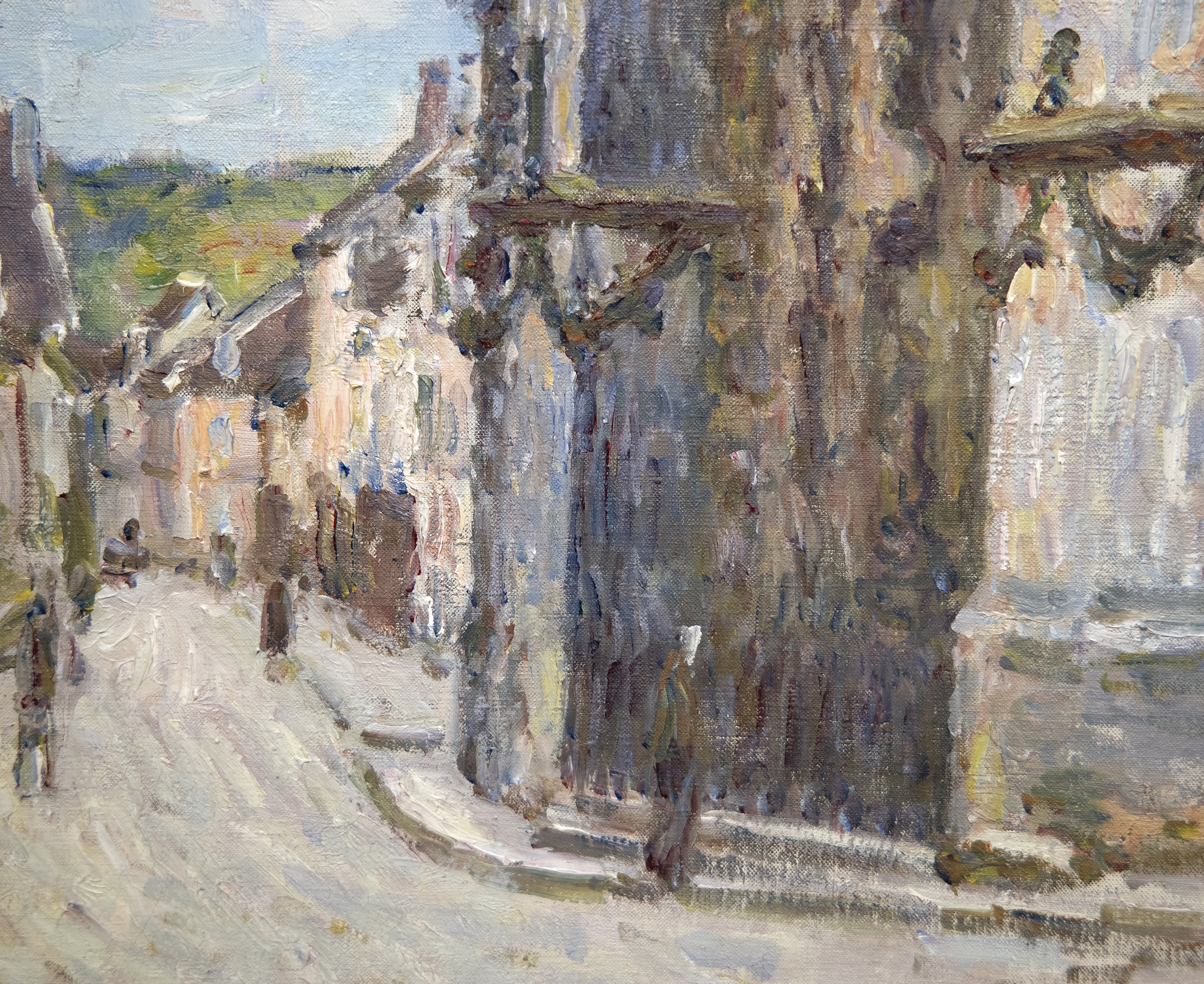
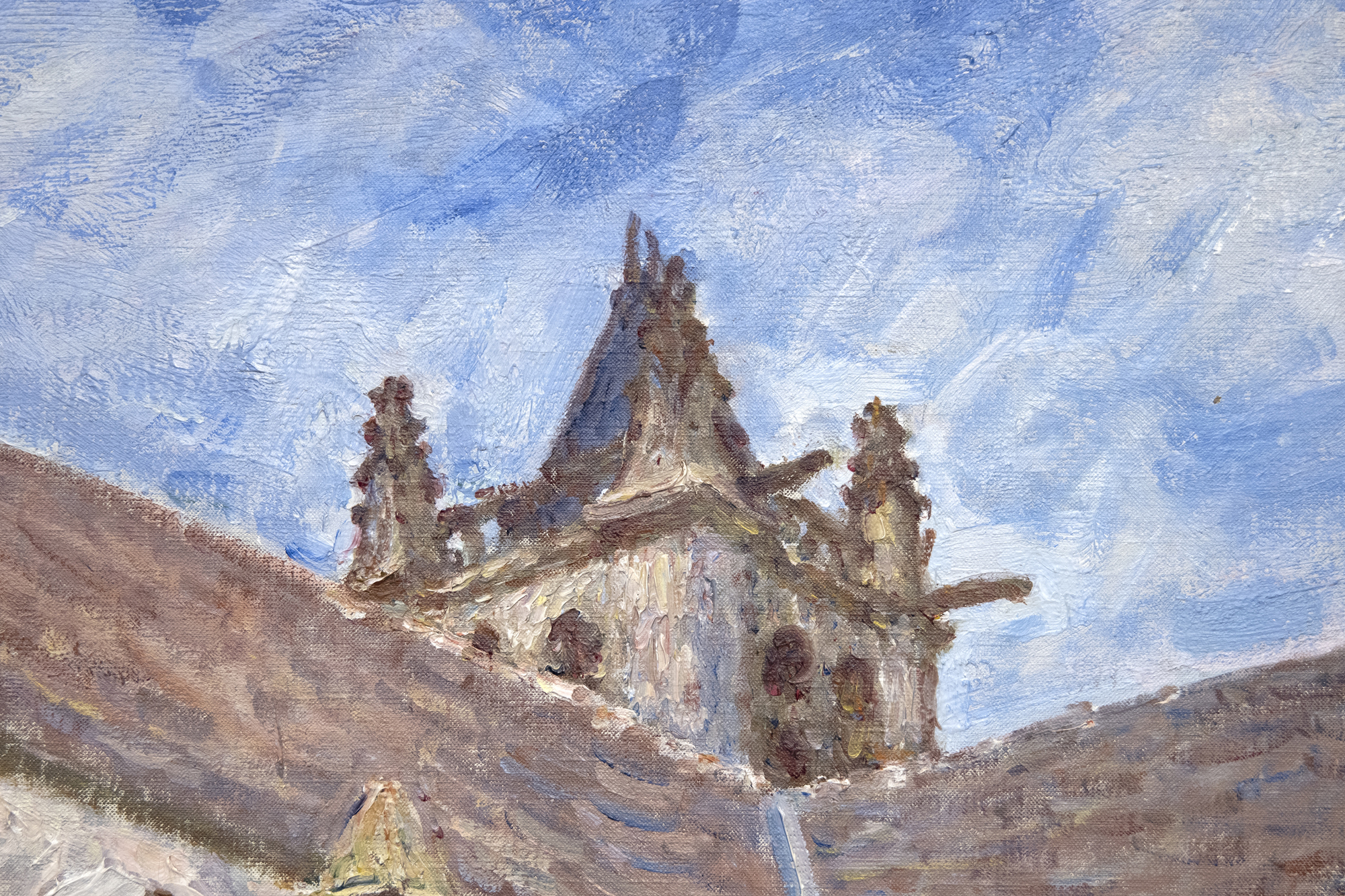
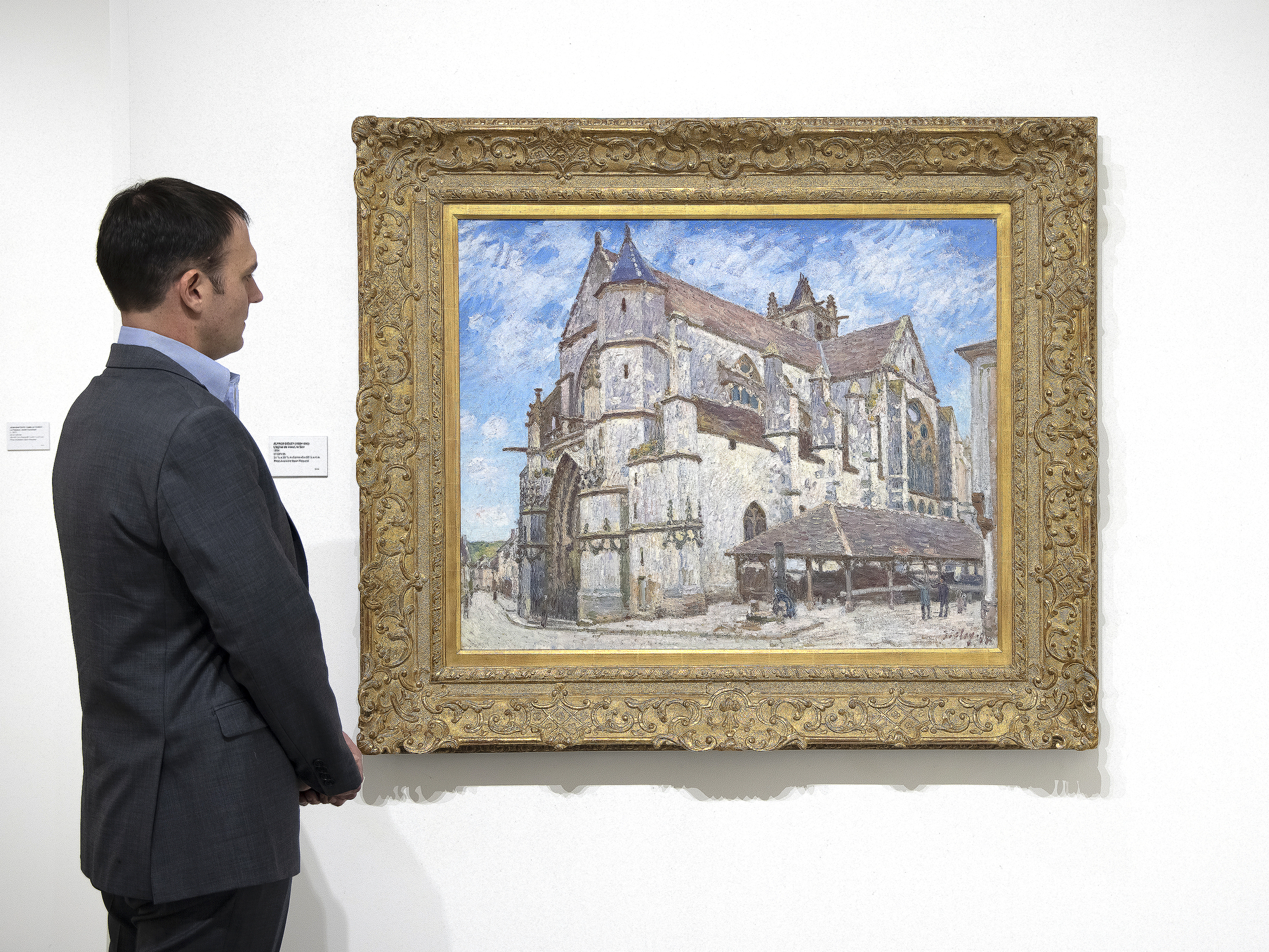
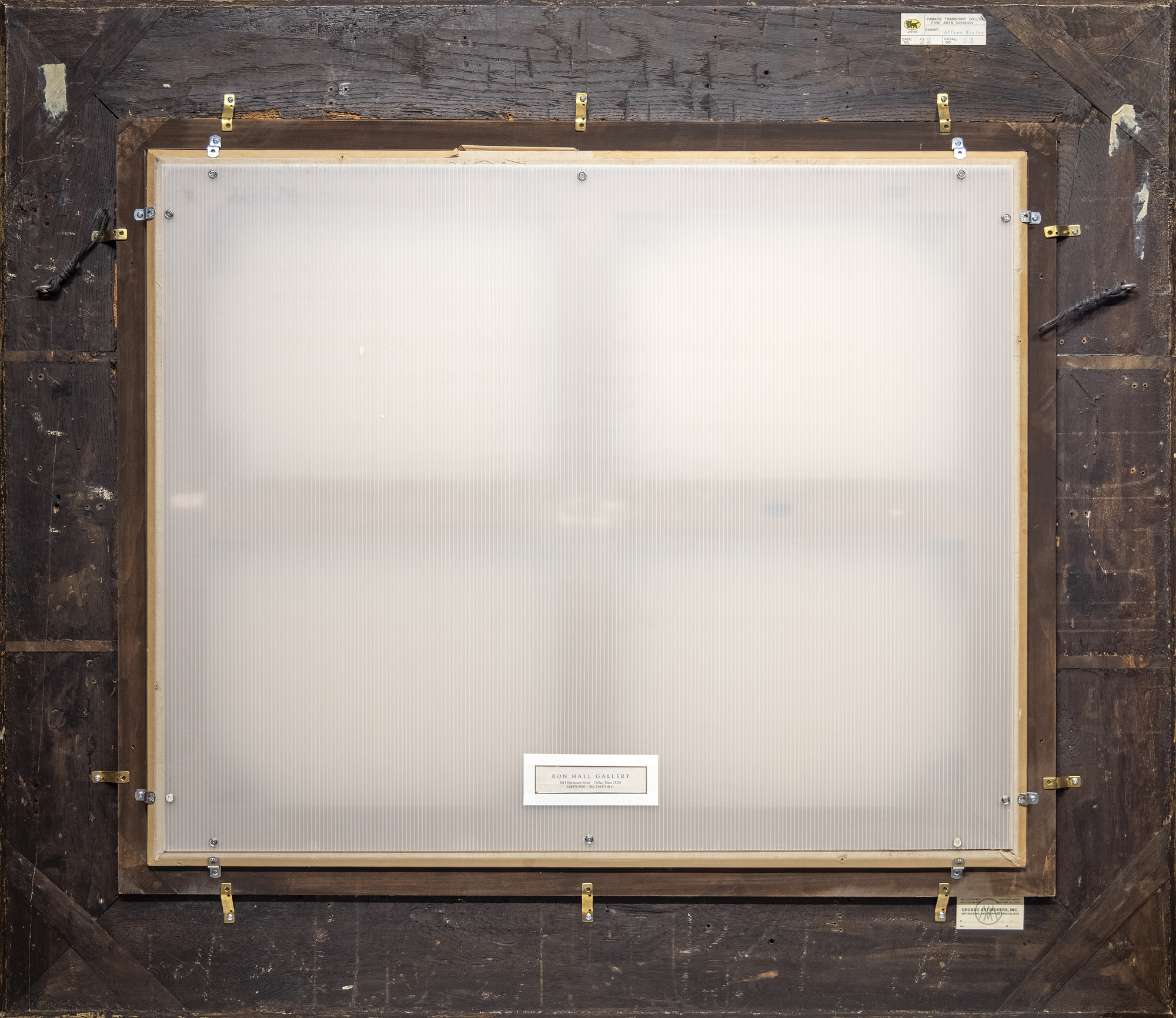
الاصل
سيسلي العقاريةبيع: Vente de l'Atelier Sisley, Galeries Georges Petit Paris, May 1, 1899, lot 13
جورج فياو، باريس
بيع: فندق دروت باريس، 20 فبراير 1908، قطعة 37
مجموعة بيرسون، باريس (تم الاستحواذ عليها في عملية البيع المذكورة أعلاه)
بيع: فينتي بيرسون، غاليري بول كاسيرير برلين، 18 أكتوبر 1927، قطعة 65
مجموعة خاصة
بيع: فندق دروت، باريس، 23 يونيو 1928، قطعة 98
مجموعة أوبيرت ، باريس (تم شراؤها في البيع أعلاه ؛ ربما مارسيل أوبيرت)
مجموعة خاصة إدوارد ناهيم غاليري
S... اكثر...تيفن بيدوفيتز ، بوكا راتون ، فلوريدا (تم الحصول عليها في عام 1989)
مجموعه خاصه ، نيويورك
لاري لاسيرت ، دالاس (تم الاستحواذ عليه في عام 1991)
مجموعة خاصة (تم الحصول عليها عام 1996)
معرض
طوكيو، متحف إيسيتان للفنون؛ كاغاوا، متحف تاكاماتسو البلدي للفنون؛ هيروشيما، متحف الفن وواكاياما، متحف إدارة الفن الحديث، معرض ألفريد سيسلي، 2000، العدد 53، مصور بالألوان الصفحات 138-139الادب
O. Reuterswaerd, 'Sisley's Cathedrals, A Study of the Church at Moret' in Gazette des Beaux Arts, March 1952, fig. 1, illustrated p. 194ف. دولتي، ألفريد سيسلي. Catalogue raisonné de l'œuvre peint, لوزان, 1959, No. 835, موضح بالأبيض والأسود
ف. دولتي، سيسلي. Les Saisons, Paris, 1992, No. 41, موضحة بالألوان ص 73
() R. Shone, Sisley, New York, 1992, pl. 134, موضح بالألوان ص 170 (مذكور الصفحات 164-165)
Brame، S.، Sisley، A.، Lorenceau، F.، & Daulte، O. (2021). ألفريد سيسلي: كتالوج نقد البينتورات والباستيل. ص 347 مريض. 347, 501
... اقل...
ومع ذلك ، سعى سيسلي لإظهار المظهر المتغير للفكرة من خلال سلسلة من التغيرات الجوية. أعطى عناوين الأعمال مثل "في الشمس المشرقة" و "تحت الصقيع" و "تحت المطر" وعرضها كمجموعة في صالون دو شامب دي مارس في عام 1894 ، وهي عوامل تشير إلى أنه فكر فيها كتفسيرات متسلسلة. ومع ذلك ، على عكس عمل مونيه ، l'église de Moret ، يكشف Le Soir أن سيسلي اختار عرض الفكرة في سياق مكاني يبرز سماتها التركيبية - المنظور الهابط للشارع الضيق على اليسار ، والركود القطري القوي لخطوط البناء كموازنة لليمين ، والوزن المهيب للمبنى الحجري فوق خط الرؤية.





